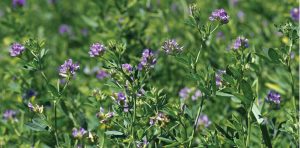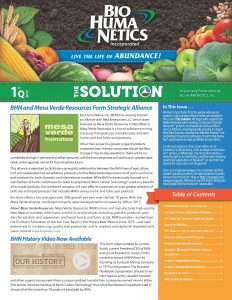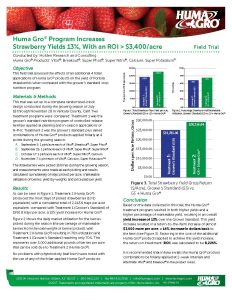
We at BHN/Huma Gro® were very pleased to be a sponsor for the Arizona Agribusiness Roundtable on December 4 at the PERA Club in Tempe. This year’s roundtable was titled, “A National Perspective on Agriculture: The Farm Bill and You.”
The Agribusiness Roundtable is a collaborative effort by the Arizona Department of Agriculture and the Agribusiness & Water Council of Arizona, Inc. Established to develop a “collective,” proactive point of view about Arizona’s future, this third annual meeting focused discussion on the importance to Arizona and national agriculture stakeholders of export trade agreements, immigration reform for the farm workforce, and proposed regulations for the 2018 Farm Bill.
Guest speakers and roundtable participants were from a number of national agriculture associations, including the National Milk Producers Federation, National Grain & Feed Association, National Cotton Council, AmericanHort, National Cattlemen’s Beef Association, United Egg Producers, Western Growers Association, and the National Pork Producers Council. Also featured were Dr. Barbara Glenn, National Association of State Departments of Agriculture; Dr. Alison Van Eenennaam, UC Davis; Paul Schlegel, American Farm Bureau Federation; Tom Davis, President, Agribusiness & Water Council of Arizona; and Mark Killian, Director, Arizona Department of Agriculture (and member of the BHN Board of Directors).
More information is at https://www.agribusinessarizona.org/agribusiness-roundtable.html.


 A new article from Dr. Mike Stewart in Plant Nutrition Today (a publication of the International Plant Nutrition Institute), reminds us that “Sulfur (S) is an important component of a complete and balanced crop nutrition program and has justifiably gained more attention in recent years. Crop consultants and decision-makers are well advised to pay attention to S nutrition and the various factors that influence its availability and level of need.”
A new article from Dr. Mike Stewart in Plant Nutrition Today (a publication of the International Plant Nutrition Institute), reminds us that “Sulfur (S) is an important component of a complete and balanced crop nutrition program and has justifiably gained more attention in recent years. Crop consultants and decision-makers are well advised to pay attention to S nutrition and the various factors that influence its availability and level of need.”


 Bio Huma Netics, Inc. (BHN)—an Arizona company that produces products under the
Bio Huma Netics, Inc. (BHN)—an Arizona company that produces products under the  Feast or famine. There doesn’t seem to be any in-between for many California growers. For the past 6 years, northern and central California have been experiencing severe drought conditions. The drought had become so extreme that the government began regulating the water available to farmers and growers throughout the state. These regulations were the first to happen to farmers in California since 1977. Due to the reduction in water rights, many fields had been left fallow.
Feast or famine. There doesn’t seem to be any in-between for many California growers. For the past 6 years, northern and central California have been experiencing severe drought conditions. The drought had become so extreme that the government began regulating the water available to farmers and growers throughout the state. These regulations were the first to happen to farmers in California since 1977. Due to the reduction in water rights, many fields had been left fallow.